 Richard (Rich) D. Pethia
Richard (Rich) D. PethiaRichard (Rich) D. Pethia
CERT/CC
"Do not go where the path may lead, go instead where there is no path and leave a trail." This quotation from Ralph Waldo Emerson embodies the qualities of Richard D. Pethia, avid fisherman and founding director of the CERT® Coordination Center (CERT/CC), now part of the CERT Division of the Carnegie Mellon University Software Engineering Institute (CMU SEI).
For three decades, Rich led CERT from its origins as the first Computer Security Incident Response Team (CSIRT) to a world-class organization dedicated to cyber research and response. Current CERT Director, former U.S. Government Chief Information Security Officer, and U.S. Air Force Brigadier General (Ret.) Greg Touhill stated it succinctly: “Countless people and organizations around the world, including myself, have benefited from Rich Pethia’s leadership, technical acumen, and strategic vision. He did not just create the world’s first CERT, he arguably launched the entire cyber incident response discipline. Few people have had such a profound positive effect on making the world a safer place.”
With an entrepreneurial spirit, Rich’s vision and passion enabled him to have the foresight to know that an international network of CSIRTs, each with their own unique environments, infrastructures, and constituencies, would be essential. CERT/CC became a founding member of the Forum of Incident Response and Security Teams (FIRST) in 1990 and hosted the first annual meetings. Rich invested resources for CERT to develop and deliver the first training courses and handbooks for CSIRTs, including the widely popular “Handbook for CSIRTs.” CERT assisted in the establishment or improvement of numerous CSIRTs including US-CERT (now part of the United States Department of Homeland Security Cybersecurity and Infrastructure Security Agency (DHS CISA)), the original AusCERT, Q-CERT, NavCIRT, A-CERT, and AFCERT, among others.
Rich used his influence to expand CERT’s work in related technical areas such as cyber workforce development, cybersecurity center development, cybersecurity engineering, enterprise risk and resilience management, insider threat, reverse engineering for malware analysis, secure development, security vulnerabilities, and situational awareness. Many of these services and practices were shared with other CSIRTs as they were established and were institutionalized in the FIRST CSIRT Services Framework.
The innovations created under Rich’s vision throughout his tenure are many. Since the CERT/CC was chartered in 1988, CERT has built and supported national CSIRTs with tools and training to help managers, project leaders, CSIRT staff, and computer forensics professionals. CERT remains the sponsor of what is now the 20th annual technical meeting for CSIRTs with national responsibility. The meeting, restricted to technical and managerial staff members, provides a forum for National CSIRTs to share information, tools, techniques, and strategies that address problems unique to CSIRTs that are responsible for a nation or economy.
It is nearly impossible to fully document the reach that Rich Pethia has had in the incident response community. The number of downloads and views from SEI blogs, podcast series, software and tools, technical papers, the vulnerability notes database, and webcast series is now in the millions. CERT continues to hold its membership in FIRST in highest esteem, most recently supporting Tracy Bills, a senior cybersecurity operations researcher, as she served as the Chair of the FIRST Board of Directors. CERT has sponsored the annual NatCSIRT meeting for two decades. Through these contributions, Rich Pethia has advanced the field of cybersecurity incident response, establishing foundational principles that CSIRTs around the globe have used for decades.
Activities
- Board of Directors (FIRST)
1990 to 1991 Chair, Board of directors
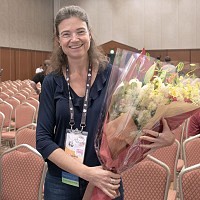 Cristine Hoepers
Cristine HoepersCristine Hoepers
CERT.br
Cristine Hoepers joined CERT.br, the Brazilian National CERT maintained by NIC.br, in 1999 and in 2000 attended the FIRST Conference for the first time. Since then, she has volunteered with several FIRST initiatives. She has been an active participant on the Membership Committee and has supported the implementation of SIM3 into FIRST processes (and is a SIM3 Auditor). She has participated in the CSIRT Framework SIG and helped develop the FIRST CSIRT Services Framework. She served on the FIRST Board of Directors in 2012/2013 and was one of the very first people to start advocating for cybersecurity incident response as a voice in internet governance and policy discussions. Without her pushing forward the very first steps, FIRST would never have engaged in forums such as the IGF and brought incident response to this policy community.
During her time at CERT.br she started a CSIRT development program which kicked off the very active development of CSIRTs in Brazil, providing CSIRT training in partnership with the CERT® Division/SEI/CMU, helping to establish CSIRTs throughout Brazil, Latin America and beyond.
She also started researching the use of honeypots for incident detection during her Ph.D. and participated in the conception and deployment of a countrywide network of honeypots in Brazil. She also published several papers sharing knowledge from the incident response (and most specifically FIRST) community, such as in the GFCE magazine, the OECD's Digital Economy papers on measuring digital security risk management, RFC 8073, the SEI State of Practice of Computer Security Incident Response Teams, GFCE Getting Started with a National CSIRT, and many more.
From 2006 to 2013 Cristine was one of the leaders of an initiative to reduce spam in Brazil by actively having network providers adopt port 25 management, and in 2020 she received from the Malware and Mobile Anti-Abuse Working Group (M3AAWG) the annual Mary Litynski Award for her work to reduce Internet abuse and increase Internet resilience. She was a member of the ITU HLEG (High Level Experts Group), and a speaker and moderator at ITU, OAS, ICANN, APWG, IGF, MAAWG, LACNIC and FIRST events.
Activities
- Board of Directors (FIRST)
2012
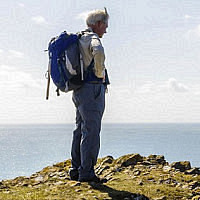 Andrew Cormack
Andrew CormackAndrew Cormack
Andrew Cormack
Andrew Cormack trained as a Mathematician well before the Internet went
mainstream. After five years on a research vessel managing the science IT,
he joined the University of Cardiff as Postmaster, where it was suggested
he might like to investigate “this world wide web thing” and assess whether
it had a future. A few years later he started the UK’s academic CERT as
well as managed the EuroCERT project. Since then IT Security was Andrew’s
passion. During his career at JISC he transitioned to the organizations
Chief Regulatory Advisor and pursued Law studies in which he graduated as a Master of Law.
Andrew’s contributions to the Incident Response community are many and
broad: He was one of the initial TRANSITS trainers and thus shaped the
careers of hundreds of incident responders. Andrew’s ability to listen
beyond the mere words that people speak, combined with his vast knowledge,
allowed him over and over again to build bridges to other fields. One
particular area of focus was the governance and legal frameworks related to
Incident Response, where he helped policy makers recognize the importance
of CSIRTs. Andew was a member of ENISA’s Permanent Stakeholder Group and
sat on the boards of ORCID and the Internet Watch Foundation. He was a
regular attendee and presenter at security conferences, and the Program
Chair of the 2019 FIRST annual conference in his native Edinburgh.
Andrew Cormack passed away on April 12 2023, only two weeks after having
learned about his induction in the IR Hall of Fame.
Article: Remembering Andrew Cormack - by Serge Droz
Activities
- Program Committee (Conference)
Since 2017 Chair 2019
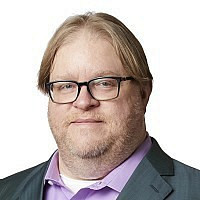 Jeffrey J. Carpenter
Jeffrey J. CarpenterJeffrey J. Carpenter
Jeffrey Carpenter has dedicated more than 30 years to improving the state of information security. In 1995, Jeffrey joined the CERT® Coordination Center at Carnegie Mellon University's Software Engineering Institute, initially as an incident response analyst, then five years later managing more than 50 technical individuals. He was instrumental in helping the U.S. Department of Defence and the U.S. Department of Homeland Security create teams to exchange incident information and indicators between government and critical infrastructure organizations. He also worked closely with the U.S. Department of Homeland Security on the formation of US-CERT, the national computer security incident response team (CSIRT) for the United States.
Jeffrey helped many other governments and regional organizations around the world establish national incident response capabilities. He founded a successful annual conference for technical staff working for CSIRTs with national responsibility to promote collaboration among these organizations. Jeffrey's active involvement in the incident response community over the years has included presenting in various forums and serving on Forum of Incident Response and Security Teams (FIRST) committees and working groups.
 Dan Kaminsky
Dan KaminskyDan Kaminsky
Dan Kaminsky (1979 – 2021) was a noted American security researcher - best known for his work finding a critical flaw in the Internet's Domain Name System (DNS) and leading what became the largest synchronized fix to the Internet infrastructure of all time in 2008. He was also known for being a great human - helping colleagues, friends, and community members attend events, working on many health apps, assisting color-blind people, hearing aid technology and telemedicine, and fighting as a privacy rights advocate. His ethos was to do things because they were the right thing to do, not because they would elicit financial gain.
Dan was co-founder and chief scientist of WhiteOps (recently renamed Human) and spent his career advising several Fortune 500 companies such as Cisco, Avaya, and Microsoft on their cybersecurity. In addition, Dan spent three years working with Microsoft on their Vista, Server 2008, and Windows 7 releases.
Many FIRST members are aware of Dan - some had the privilege of meeting and working with him. All of us will miss him and the energy, creativity, curiosity, and, above all, the fun he brought to our world.
The New York Times labeled him an "Internet security savior" - an honorific too often given but, in this case, very well deserved.
Photo: Dave Bullock / eecue
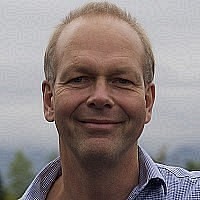 Don Stikvoort
Don StikvoortDon Stikvoort
Don Stikvoort is founder of the companies “S-CURE” and “Cross Your Limits”. S-CURE offers senior consultancy in the area of cyber security – specialising in CSIRT matters. Cross Your Limits coaches and trains in the human area. Based in Europe, Don’s client base is global.
After his MSc degree in Physics, he became Infantry platoon commander in the Dutch Army. In 1988 he joined the Dutch national research network SURFnet. In that capacity he was among the pioneers who together created the European Internet since November 1989. He recognised “security” as a future concern in 1991, and was chair of the 2nd CSIRT in Europe (now SURFcert) from 1992-8, and FIRST member since 1992. Today Don is a FIRST Liaison Member.
Together with Klaus-Peter Kossakowski he initiated and built the closer cooperation of European CSIRTs starting in 1993 – this led to the emergence of TF-CSIRT in 2000. In 1998 he finished the "Handbook for Computer Security Incident Response Teams (CSIRTs)" together with Kossakowski and Moira J. West-Brown of CERT/CC. He was active in the IETF and RIPE (co-creator of the IRT-object). Don chaired the Program Committee for the 1999 FIRST conference in Brisbane, Australia, and kick-started the international FIRST Secretariat in the same year. From 2001-2011 his company ran TF-CSIRT’s Trusted Introducer service. He wrote and taught several training modules for the CSIRT community.
In 1998 Don started his first company. A first assignment was to build the network connecting over 10,000 schools in The Netherlands. Many CSIRTs were created with his help and guidance, among which the Dutch national team (NCSC-NL). Second opinions, audits and maturity assessments in this field have become a specialty – and in that capacity Don developed SIM3 in 2008, the maturity model for CSIRTs which is used worldwide today for maturity assessments and certifications. SIM3 has is now under the wings of the “Open CSIRT Foundation” (OCF). Don was one of the founders in 2016 and now chairs its board.
Starting in 1999, Don was certified in NLP, Time Line Therapy®, Coaching and Hypnotherapy, and brought that under the wing of “Cross Your Limits”, which portfolio is life & executive coaching, and training courses in what Don likes to call “human arts”. He also trains communicators, presenters and trainers, including many in the CSIRT field.
Don thrives as motivational and keynote speaker. He enjoys to share his views on how the various worlds of politics, economics, psychology and daily life, but also cyber security, all intertwine and relate – and how deeper understanding and a better ability to express ourselves, increase our ability to bring good change to self as well as the world around us. He has discussed such topics all over the world, from Rome to the Australian Outback. His goal is to challenge his audience to think out-of-the-box, and motivate them to be the difference that makes the difference, along the lines of the old African proverb:
“If you think you’re too small to make a difference, try sleeping in a closed room with a mosquito”.
Activities
- CSIRT Framework Development (SIG)
Participant
- Ethics (SIG)
Participant
- Incident Response Hall of Fame Inductee (FIRST)
2020
- Membership Committee (FIRST)
Since 2017 Member
Until 2012 Member (since its inception)
- Metrics (SIG)
Participant
- Program Committee (Conference)
1999 Program Chair for the 1999 FIRST Conference in Brisbane, Australia
1995 to 2001 Participant
- TLP (SIG)
Since June 30, 2015 Chair
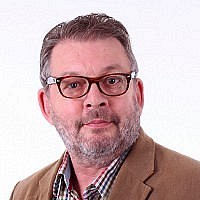 Ian Cook
Ian CookIan Cook
Corbels Security Services Ltd.
Ian Cook has held senior technical and management positions at the UK NHS, Tricentrol Oil Corporation, Saudi American Bank, Citigroup, Merrill Lynch, Pentest Ltd, Barclays Bank and Team Cymru. On leaving Team Cymru in 2014, he was awarded the title ‘Team Cymru Emeritus’ which is conferred upon Cymraeg who retire after a particularly noteworthy career and is a mark of distinguished service.
Ian is a true cybersecurity veteran. When he first started in the industry, over 43 years ago, Microsoft, Google, Facebook, CISCO and Amazon didn’t exist, PCs had not yet been invented and storing the world's business and personal data on something called “The Cloud” would have sounded like classic science fiction, as would the notion of criminals hiding out in something known as the “Dark Web”. “Cybercrime” itself is another term that would have sounded as if it might have sprung straight from the pages of Arthur C. Clarke.
He is very happy to share his vast experience with industry newcomers and currently provides Virtual CISO and mentoring Services to SME’s and start-ups as well as acting as a Talent Scout for VC's and Angels. He is also a mentor at the Cylon and HutZero startup accelerators and is on Advisory Boards at IOActive, CTM360 and Assuria. Ian plans to retire in October 2020, which will give him additional time to help security professionals cope with the growing mental health issues caused by being in a job where you are never off duty and never have adequate resources. His mantra is: “It’s OK not to be OK.”
Ian first joined FIRST as the Citibank FIRST Representative in 1997 and attended the Annual Conference in Bristol which was hosted by JANET-CERT. From this time Ian has been an active member and has sponsored many companies into FIRST and shepherded them thru the membership process. Ian was elected to the FIRST Steering Committee in 2000 and served for 6 years. During this time the SC began to transition FIRST from being a club of Incident Responders to being a professional Organization with Global Influence and he is proud to have been at the start of this process. In 2001, Ian worked with Gavid Reid to setup the Best Practice Guide Library which contains security guides and templates submitted by FIRST members and for many years Ian ran a Security News mailing list that was daily sent to all FIRST members.
In 2007 Ian was co-Chair with Arjen De Landgraaf at the 19th Annual FIRST Conference in Seville, Spain. That year the conference included many new features such as Beer 'n Gear – where vendors demonstrated their equipment whilst handing out free beer, a Security Conference Blog, a Security News Podcast and a Geek Zone which included a hands-on Security Challenge. To advertise the event he even got the First Conference Logo prominently displayed on a Stealth B6 racing car at Silverstone’s GT90’s Revival race.
More recently Ian has been instrumental in forming the FIRST Cyber Threat Intelligence SIG and helping to facilitate the 2019 FIRST CTI Symposium held in London which was hosted by Digital Shadows and BT.
Activities
- Board of Directors (FIRST)
2001 to 2005
- Cyber Threat Intelligence (SIG)
Since June 16, 2018
- Incident Response Hall of Fame Inductee (FIRST)
2020
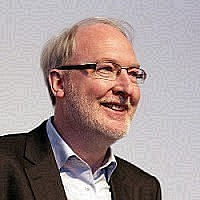 Klaus-Peter Kossakowski
Klaus-Peter KossakowskiKlaus-Peter Kossakowski
PRE-CERT
Prof. Dr. Klaus-Peter Kossakowski has worked in the security field for more than 30 years. In 1988 he was one of the first members of the Virus Test Center in Hamburg where he focused on malicious network programs. In January 1993 when DFN-CERT became the first German CERT for an open network he started to work there and became managing director of it in 2003. He also founded PRESECURE Consulting GmbH, a privately-owned company specialized in cyber security, critical information infrastructure protection, situational awareness, early warning and developing specialized services like CERTs or SOCs. He successfully led the team from a research effort to a functional and well-respected operational entity. He was a visiting professor at the University of Hamburg from 2008 to 2011 and became a full professor at the University of Applied Science in Hamburg in 2014.
Since 1998 he is continuously providing feedback on research topics, operational experiences and lessons learned to the community. This started with the “CSIRT Handbook” in 1998, republished in 2003, that he co-authored with Moira West-Brown and Don Stikvoort. His research work was mostly supported by the CERT Coordination Center at the CMU/SEI for which he worked as visiting scientist from 1998 to 2011.
He was elected as a member of the FIRST Steering Committee in 1997 and had been on the committee until 2005, being re-elected three times and served the two last years as Chair of the FIRST Steering Committee. Frequently he has been involved with FIRST Conferences as volunteer, organizer and presenter or served on the program committee. In 2015 he was representing the local host of the FIRST Conference in Berlin, in 2017 he was the Program Chair for the FIRST Conference on Puerto Rico.
Together with Don Stikvoort he developed the accreditation and certification frameworks for CERTs and security teams including the now commonly accepted SIM3 maturity model adopted by ENISA and now maintained by the openCSIRT Foundation. Since 2011 he coordinates the Trusted Introducer framework providing infrastructure services, accreditation and certifications to nearly 400 security, product security and incident response teams internationally. Through the Trusted Introducer service and the support of his university he promotes and supports approaches like SIM3 or emerging frameworks or taxonomies for CERTs, most namely the “FIRST CSIRT Services Framework” and the “eCSIRT Incident Taxonomy”, which goes back to the eCSIRT.net project of 2003 successfully lead by him.
Prof. Dr. Kossakowski helped considerably to raise the awareness for CERTs concentrating on international issues, information sharing and coordinated cooperation, and establishing an international infrastructure for Cyber Defense.
Activities
- Board of Directors (FIRST)
2004 Chair
2003 Chair
2002
2001
2000
1999
1998
1997
- Incident Response Hall of Fame Inductee (FIRST)
2019



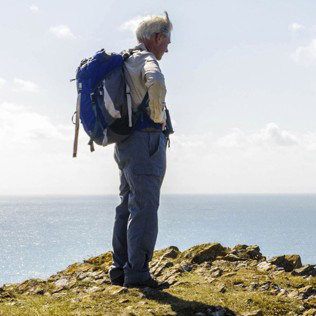
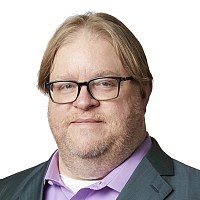
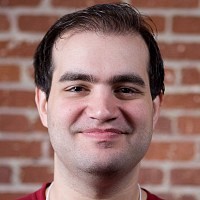
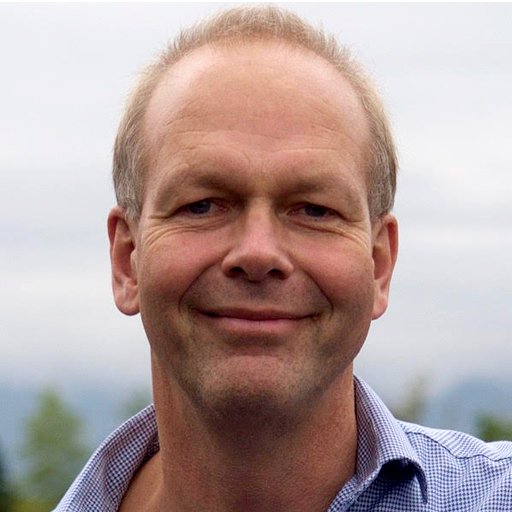
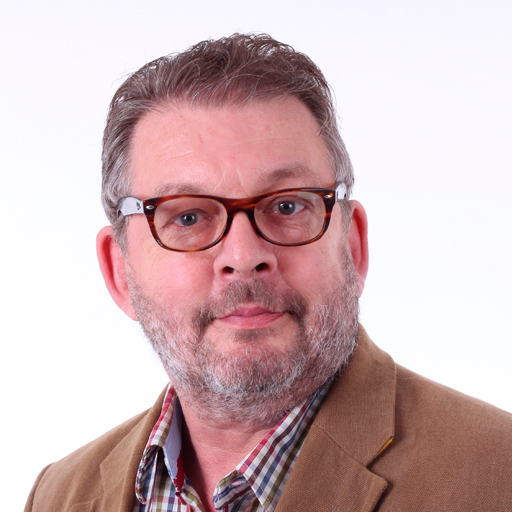
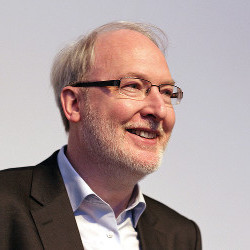
 Cristine Hoepers
Cristine Hoepers Andrew Cormack
Andrew Cormack Jeffrey J. Carpenter
Jeffrey J. Carpenter Dan Kaminsky
Dan Kaminsky Don Stikvoort
Don Stikvoort Ian Cook
Ian Cook Klaus-Peter Kossakowski
Klaus-Peter Kossakowski